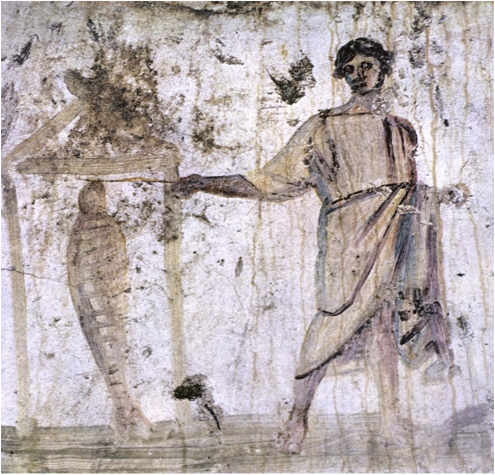
In the unbinding of Lazarus, I am reminded that we need one another alongside us as we undergo the vulnerable process of being unwrapped, of seeing in a new way, of learning to use our hands and feet again.

The process of coming alive is mysterious and holy work. In the raising of Lazarus, I am reminded that we must be gracious with one another as we recognize the fact that we’re all in various stages of coming out of our tombs. Image by Tauseef Mustafa/AFP/Getty Images. Kashmiri girls take a stroll in Srinagar's Tulip garden, claimed to be Asia's largest. Through this process we remember the many people who came and unbound us and we learn continually what it means to be free. When we welcome the stranger and affirm their humanity, we unbind ourselves. When we remind women of their own power and give them access to education, we unbind ourselves. When we advocate for work that is purposeful and sustaining, we unbind ourselves. When we work to make the stories of minorities rise to the top, we unbind ourselves. When we make sure our neighbors have the ability to make a home, we unbind ourselves. It is God’s work it is our work it is the work of social justice, of repairing the world. This is no small miracle, but the one that comes to us in tangible ways. What God makes alive, it is our responsibility to help unbind. Herein lies the heart of God: that human hands are used to accomplish God’s work. On the journey of faith, we also encounter stones that seal us off from life and cloth that binds our transformation. We are called from our tombs and do not emerge on our own. This is not a stance of passivity, but of peace. We have no control over them and we leave them to God. We are able to relax into the idea that there are aspects of our becoming that belong to a higher power. We are but partners in both of these processes.

Within the text, we receive two imperatives from Jesus, “come out” and “unbind.” As people of faith, it is good to remember that the work of becoming is not work we do alone. Image by LOUISA GOULIAMAKI/AFP/Getty Images. In the foreground, a tulip survives while a Maidan protester stands at a barricade on Independence Square in central Kiev. If we look again at the story of Lazarus as a microcosm for the life of faith, we find a new imagery in the stones and cloth. Through my dialogue with the mystery and with others, I am becoming a person of faith.

Through my experience in the world and life with others, I am becoming a human being. It is a process of becoming, not an event. What it means to be a person faith is not dissimilar from what it means to be a human being. We who were once dead are made alive again. The imagery of resurrection is woven into the Christian faith, which can often cause expectations of transformation. The community, gathered around the miraculous, receives its second imperative: “The dead man came out, his hands and feet bound with strips of cloth, and his face wrapped in a cloth.” In the raising of Lazarus, we hear Christ’s famous imperative, “Take away the stone” followed by, “Lazarus, come out.” We Christians tend to linger on this imagery year after year, but then we come to chapter 11 of John’s gospel, what I call the miracle after the miracle:

The lectionary approaches Easter by way of another encounter with death.


 0 kommentar(er)
0 kommentar(er)
